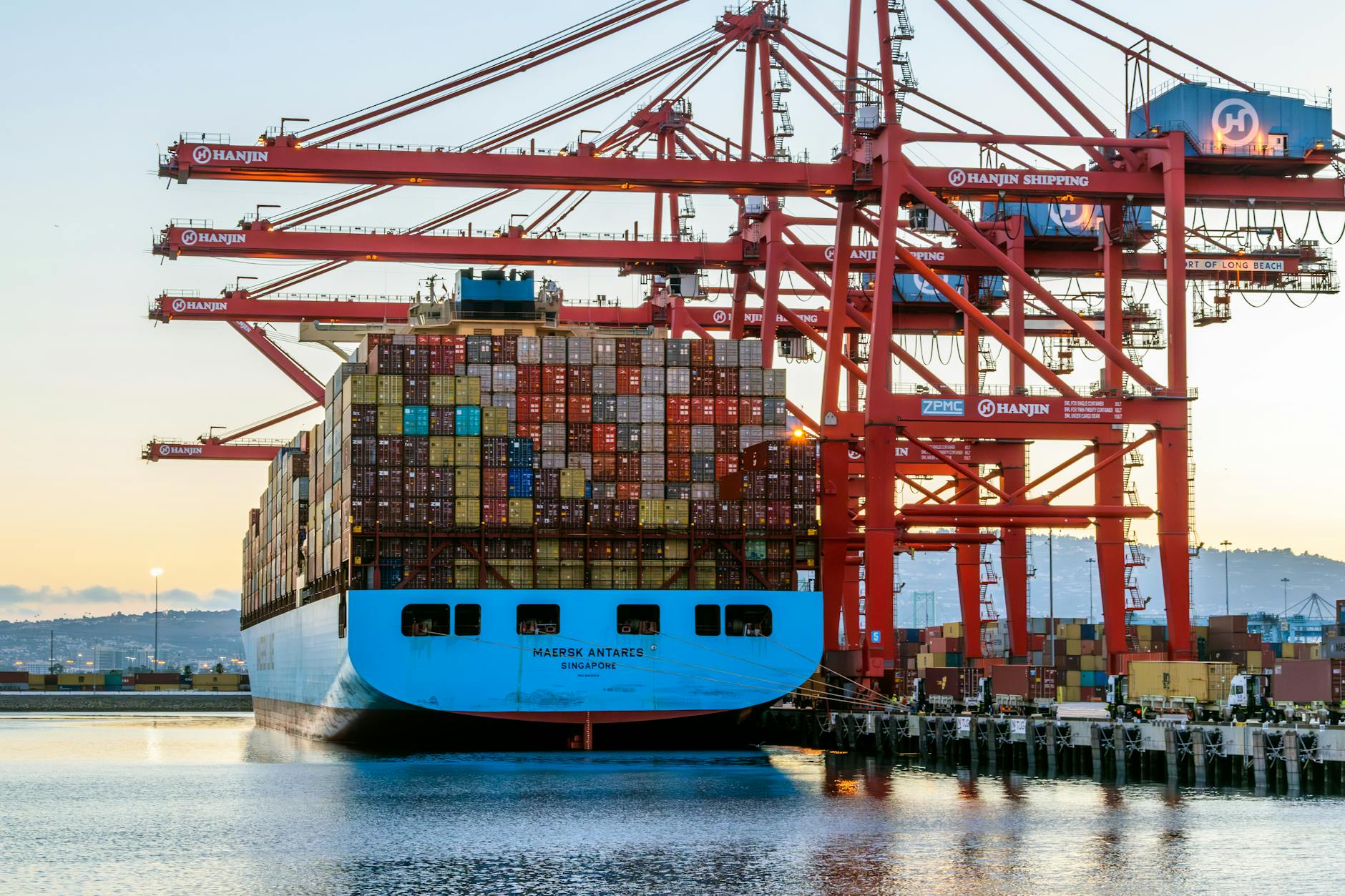Bolivia Stands at a Crossroads: A New Political Era Dawns After Decades of Leftist Rule
Centrist Senator’s Unforeseen Surge Points to Run-Off Election, Signaling Potential Shift in National Direction
Bolivia’s political landscape is poised for a dramatic transformation following preliminary results from the recent presidential election. The upcoming run-off, a first in the nation’s recent history, will pit two right-wing candidates against each other, signaling a significant departure from the nearly two decades of governance by the leftist Movimiento al Socialismo (MAS) party. This electoral outcome, steeped in the context of a deepening economic crisis, reflects a complex electorate seeking new leadership and potentially a new direction for the country.
The most striking aspect of these preliminary results is the unexpected ascent of Senator Rodrigo Paz Pereira, a 57-year-old centre-right politician. Paz Pereira, who began his campaign with a mere 3% in opinion polls, has emerged as a formidable contender, capturing the most votes in the first round. His surge, against more established right-wing figures, suggests a potent public sentiment for change that transcends traditional party affiliations. The election’s trajectory indicates a decisive break from the socialist stronghold that has defined Bolivian politics since Evo Morales’s ascent to power in 2006.
The intricacies of this electoral moment are deeply intertwined with Bolivia’s recent socio-economic history. Understanding the forces at play requires a thorough examination of the MAS era, the economic challenges the nation currently faces, and the specific platforms of the leading candidates.
Context & Background
Bolivia’s political narrative for the past two decades has been overwhelmingly shaped by the Movimiento al Socialismo (MAS) party. Founded by Evo Morales, the MAS ushered in an era of significant social and economic reforms, often characterized by nationalizations of key industries, increased social spending, and a strong emphasis on indigenous rights. Morales’s presidency, which began in 2006, marked a radical departure from previous neoliberal policies and positioned Bolivia as a prominent voice within the Latin American leftist movement. His administration was credited with reducing poverty and inequality, and fostering a sense of national pride.
However, the latter years of MAS governance, and the period following Morales’s controversial bid for a fourth term which led to his resignation in 2019 amidst widespread protests and accusations of electoral fraud, have been marked by increasing economic challenges. Bolivia, heavily reliant on the export of natural resources like gas and minerals, has been vulnerable to global commodity price fluctuations. The onset of the COVID-19 pandemic further exacerbated these economic woes, leading to contractions in GDP, rising unemployment, and a general decline in living standards. This economic strain has created fertile ground for a shift in political sentiment.
The 2019 political crisis, in particular, left deep divisions within Bolivian society. The interim government of Jeanine Áñez followed, with its own set of challenges and criticisms. The subsequent return of the MAS to power in 2020 with Luis Arce, Morales’s former finance minister, aimed to stabilize the country and continue many of the party’s core policies. However, the preliminary results of the latest election suggest that this mandate may be waning, with voters signaling a desire for alternative leadership.
The constitutional framework of Bolivia mandates a two-round presidential election if no candidate secures more than 50% of the valid votes, or at least 40% with a 10-point lead over the nearest rival. The fact that the election is heading to a run-off, and that the top two contenders are from the right, underscores the erosion of the MAS’s dominance and the electorate’s willingness to explore different political avenues. The emergence of Rodrigo Paz Pereira as the leading vote-getter in the first round is a particularly noteworthy development, challenging conventional wisdom and campaign projections.
Further context can be found in electoral data and historical political trends. Official election results and reports from Bolivian electoral bodies, such as the Tribunal Supremo Electoral de Bolivia, provide granular detail on voting patterns and the performance of various political parties throughout history. Analysis of past election cycles and voter demographics from institutions like Latin American Public Opinion Project (LAPOP) can offer deeper insights into the underlying currents of public opinion.
In-Depth Analysis
The preliminary results of the Bolivian presidential election reveal a complex and evolving political dynamic. The projected run-off between two right-wing candidates, with Senator Rodrigo Paz Pereira leading the initial vote count, signifies a profound shift away from the socialist hegemony that has characterized Bolivian politics for nearly two decades. This outcome is not merely a partisan victory for the right, but a reflection of a multifaceted public desire for change, driven by a confluence of economic anxieties, political fatigue, and a re-evaluation of the MAS party’s long-standing influence.
Rodrigo Paz Pereira’s unexpected performance is a central narrative in this election. His victory in the first round, securing more votes than more established right-wing figures, can be attributed to several factors. Firstly, his campaign likely tapped into a sentiment of weariness with the established political order, including both the MAS and other traditional right-wing parties that have struggled to gain significant traction. His positioning as a “new” or at least a less controversial right-wing option may have resonated with voters seeking a credible alternative without alienating them with more extreme ideologies. His centre-right stance could have appealed to a broad spectrum of voters, including those who were once MAS supporters but are now disillusioned by economic performance or seeking a more moderate approach.
The economic crisis gripping Bolivia has undoubtedly played a pivotal role in shaping voter preferences. Persistent inflation, job losses, and a perceived lack of effective economic management under the current government have created an environment ripe for protest votes. Candidates promising economic revitalization, fiscal responsibility, and a more market-oriented approach have found a receptive audience. The preliminary results suggest that voters, when faced with economic hardship, are willing to consider candidates who offer different solutions, even if they represent a departure from the ideological leanings of the recent past.
The MAS party, despite its historical dominance, appears to have been unable to fully mobilize its base or persuade a majority of voters that its current leadership and policies are the best path forward. While President Luis Arce remains a significant figure, the preliminary results indicate a decline in the party’s overall electoral strength. This could be due to a combination of factors, including internal party divisions, the lingering effects of the 2019 political turmoil, and the inability to adequately address the current economic challenges. The fact that the MAS did not secure enough votes to avoid a run-off suggests a broadening of the political spectrum beyond its traditional appeal.
The specific candidates in the run-off, apart from Paz Pereira, represent the diverse currents within the Bolivian right. Analyzing their platforms, voting bases, and past political records is crucial to understanding the dynamics of the second round. Their ability to forge alliances, articulate a compelling vision for the future, and appeal to voters who did not initially support them will be critical. The run-off will likely become a contest of contrasting visions for Bolivia’s economic and social future, with voters having to make a stark choice between different ideologies and approaches to governance.
Furthermore, the electoral process itself, including voter turnout and the integrity of the count, provides valuable insights. Reports on voter participation rates, analysis of regional voting patterns, and any observations regarding the fairness of the election from independent observers such as the Organization of American States (OAS) election observation mission can offer a more comprehensive understanding of the electoral landscape and the public’s engagement with the democratic process. Understanding demographic shifts in voting patterns, such as the impact of urban versus rural votes, or generational differences in political affiliation, would also be beneficial.
The preliminary results from the Tribunal Supremo Electoral de Bolivia, which are subject to final confirmation, provide the foundational data for this analysis. Examining reports from reputable news organizations that are covering the election extensively, such as the Guardian’s reporting on this election, offers a journalistic perspective on the events as they unfold. Understanding the historical context of Bolivian elections, including the performance of the MAS and its predecessors, can be gleaned from academic research and archives of electoral data from bodies like the International Institute for Democracy and Electoral Assistance (International IDEA).
Pros and Cons
The prospect of a new political era in Bolivia, marked by a potential shift from decades of MAS dominance, presents both opportunities and challenges for the nation. Examining the potential implications of this electoral trajectory requires a balanced consideration of the advantages and disadvantages associated with the leading candidates and the broader political transition.
Potential Pros:
- Economic Diversification and Reform: Right-wing candidates often advocate for market-oriented economic policies, which could lead to greater foreign investment, privatization of state-owned enterprises, and efforts to diversify the economy beyond its reliance on natural resources. This could foster greater economic growth and stability in the long term.
- Fiscal Responsibility: Many right-leaning platforms emphasize fiscal discipline and reduced government spending. This could help to curb national debt, control inflation, and improve the country’s overall financial health, potentially leading to a more sustainable economic model.
- Increased Political Pluralism: A successful transition to a right-wing government could signal a broader embrace of political pluralism and a departure from what some critics have termed a “hegemonic” leftist rule. This could foster a more competitive political environment and encourage a wider range of voices in national discourse.
- Improved International Relations: Depending on the specific ideologies of the winning candidates, a right-wing government might pursue closer ties with Western nations and international financial institutions, potentially unlocking new avenues for trade, aid, and cooperation.
- Addressing Dissatisfaction: The fact that two right-wing candidates are in the run-off indicates a significant segment of the electorate is dissatisfied with the status quo. A change in government could address this widespread sentiment and potentially lead to greater public trust in institutions.
Potential Cons:
- Social Program Cuts: Economic reforms often come with austerity measures, which could lead to cuts in social welfare programs, subsidies for essential goods, and public services. This might disproportionately affect the poorest segments of the population, potentially increasing inequality.
- Increased Inequality: Market-oriented policies can sometimes lead to a widening gap between the rich and the poor, particularly if not accompanied by robust social safety nets and progressive taxation. This could exacerbate existing social tensions.
- Political Instability: A sharp departure from the MAS’s long-standing policies and a transition to a new ideological paradigm could lead to political instability, especially if the new government struggles to consolidate power or faces significant opposition from former MAS supporters.
- Potential for Social Unrest: If proposed reforms are perceived as detrimental to the interests of specific social groups, or if the transition is not managed smoothly, there is a risk of renewed social unrest and protests.
- Loss of Social Gains: The MAS government made significant strides in poverty reduction and increased access to education and healthcare for many. A new government’s policies could potentially reverse some of these hard-won social gains if not carefully managed.
It is important to note that these are potential outcomes and the actual impact of a new government will depend heavily on the specific policies enacted, the political will to implement them effectively, and the reactions of various societal groups. The nuanced nature of Bolivian politics means that any analysis of pros and cons must consider the country’s unique historical, social, and economic context. Further research into the detailed policy proposals of the leading candidates would provide a more precise understanding of these potential outcomes. Information on the social programs implemented by the MAS can be found in reports from government ministries or social development organizations operating in Bolivia, while proposals for economic reform from the leading candidates would be available on their respective campaign websites or through official party statements.
Key Takeaways
- Bolivia’s upcoming presidential election will feature a run-off for the first time in recent history, marking a significant shift after nearly 20 years of MAS dominance.
- Two right-wing candidates are set to compete in the second round, indicating a broad desire for political change among the electorate.
- Senator Rodrigo Paz Pereira, a centre-right figure, unexpectedly emerged as the leading vote-getter in the first round, defying earlier polling predictions and signaling a potential realignment of political forces.
- The economic crisis gripping Bolivia, characterized by inflation and unemployment, has been a major factor influencing voter sentiment and driving the demand for new economic policies.
- The MAS party, despite its historical achievements, appears to have lost some of its electoral momentum, facing challenges in retaining its traditional base and addressing current economic concerns.
- The run-off election will present voters with a clear choice between different ideological approaches to governance, economic management, and social policy.
- The outcome of the run-off will likely have profound implications for Bolivia’s economic direction, social policies, and its standing on the international stage.
Future Outlook
The trajectory of Bolivian politics now hinges on the impending run-off election. The results of this second round will not only determine who occupies the presidential palace but will also set the course for the nation’s economic and social development for the foreseeable future. The campaign leading up to the run-off will likely be intense, as both leading candidates strive to consolidate their support bases and appeal to the significant number of voters who participated in the first round but did not fully endorse either of the eventual contenders.
For Senator Rodrigo Paz Pereira and his right-wing allies, the challenge will be to maintain the momentum generated in the first round and to broaden their appeal beyond their core supporters. This will likely involve articulating a clear and compelling vision for economic recovery, addressing concerns about social inequality, and reassuring voters about their commitment to democratic institutions and social cohesion. Their ability to present a united front and to avoid internal divisions will be crucial for their success.
Conversely, the MAS party, while not in the run-off, remains a powerful political force in Bolivia. The party will likely engage in a strategic effort to influence the outcome of the second round, potentially by mobilizing its supporters to vote for a particular candidate or by remaining neutral. The internal reflections within the MAS regarding their electoral performance and future strategy will also be significant. Their ability to adapt and reconnect with segments of the electorate that have shifted their allegiances will be key to their long-term relevance.
The economic situation will undoubtedly remain a dominant theme throughout the run-off campaign and beyond. Any new government will inherit a challenging economic landscape, and its success will largely be judged by its ability to stabilize the economy, create jobs, and improve living standards. The specific policy proposals related to fiscal management, investment, and social spending will be under intense scrutiny by both domestic and international stakeholders.
Beyond the immediate electoral contest, Bolivia faces the broader challenge of healing political divisions that have been exacerbated by recent crises. The run-off presents an opportunity for a more inclusive political dialogue and a renewed commitment to national reconciliation. The ability of the incoming leadership to foster a sense of unity and to govern with a broad mandate will be essential for long-term stability and progress.
The international community will be closely watching Bolivia’s political transition. The country’s relationship with regional powers, international financial institutions, and its trading partners will likely be influenced by the policies and ideological orientation of the next government. Understanding the economic policies and geopolitical alignments of the leading candidates would provide further insight into Bolivia’s future international posture. Information regarding current economic indicators and forecasts for Bolivia can be accessed through the International Monetary Fund (IMF) or the World Bank.
Call to Action
As Bolivia stands at this pivotal juncture, informed engagement from its citizens and keen observation from the international community are paramount. The upcoming run-off election presents a critical opportunity for the Bolivian people to shape their nation’s future. Citizens are encouraged to actively participate in the democratic process, ensuring their voices are heard through continued voter registration and informed decision-making at the ballot box.
For those seeking to understand the intricacies of this political transition, delving deeper into the platforms and historical records of the leading candidates is essential. Examining policy proposals, engaging with diverse media sources, and participating in respectful public discourse are vital steps towards a comprehensive understanding of the choices before Bolivia. Resources from academic institutions and non-governmental organizations focused on democracy and governance in Latin America can offer valuable analytical perspectives.
The international community, including organizations dedicated to democratic observation and human rights, is encouraged to monitor the electoral process closely, ensuring transparency and fairness. Supporting initiatives that promote civic education and political dialogue within Bolivia can contribute to a more stable and democratic future for the nation. Finally, staying informed through credible news outlets and official electoral reports is crucial for tracking the developments of this historic election.









